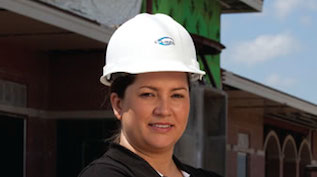Q & A with Surdna Foundation Board Member John Hawkins on Impact Investing

The Surdna Foundation, one of the oldest foundations continuously governed by the founder’s descendants, established a Program Related Investment fund in 2012—more than a decade after the board first discussed impact investing. John Hawkins, a board member and great-grandson of Surdna’s founder John E. Andrus, discusses the evolution of the board’s thinking on impact investing, including its initial reluctance—due in part to family dynamics. Hawkins describes the contours leading to the board’s eventual embrace of a PRI fund and the how the family’s values informed that decision.
When did the Surdna Foundation board first start discussing impact investing?
We made our first Program Related Investment in April 2014 but it was nearly 17 years ago that the board began to discuss what we now call impact investing. It was shortly after the sale of some forestry holdings that we invited in experts to talk with us about green investing and establishing investment screens based on companies’ social and environmental performance.
What became of those early impact investing conversations?
Many of the board members were just not ready to have these conversations. We had always maintained a traditional view that discussions about our program work and investments were separate—and unrelated. They occured in different committees. As grantmakers, we were actively pursuing our mission. And as investors of the endowment, the board felt its focus was on maximizing the funds available for grantmaking.
Tell us about any critical roadblocks?
To our Investment Committee, the incentives of incorporating social or environmental considerations—and the possibility of decreased financial returns—felt like a violation of their fiduciary responsibility. So the board’s reluctance was less about the availability of these sorts of investments or the markets, and more about the attitudes around the board table and among our investment advisors.
How did the composition of the board effect its consideration of impact investing?
As with many family philanthropies, personal differences unrelated to the issues at hand would often cloud discussions. Add to this the board’s embrace of consensus—the flip side of which was an utter aversion to conflict. And consensus usually meant that the strongest personalities would push others to take their point of view. So conversations about impact investing were often thwarted.
Was there a particular point at which the board conversation about impact investing turned a corner?
It wasn’t a single point but an evolution with a few important milestones. In 2004, nearly 87 years after Surdna’s founding by my great-grandfather, in an effort to introduce fresh ideas around the board table, we appointed the first non-family trustees. The focus was on recruiting people who would introduce different insights and expertise, and add greater racial and ethnic diversity. And we also wanted candidates with financial acumen. The presence of non-family board members alone helped to diffuse historical tensions, keep the focus on our mission, and accelerate our discussions around a PRI program.
Were there any external factors that helped inform the board’s thinking?
In 1992 in an effort to turn around the South Bronx, Surdna led a funder partnership called the Comprehensive Community Revitalization Program aimed at strengthening local community development corporations to develop strategies to revitalize their communities. That work was complex and caused many of us to realize that our grants were not effecting change alone. They were part of a broader approach that included other partners, advocacy, and private investment.
Were there any staff changes that led to the board’s decision to create a PRI program?
For years Surdna has had a CFO who is as focused on the mission of the foundation as he is on growing the endowment. He understands that managing our assets for financial return is not incompatible with managing for social returns. And conversations between program staff and the CFO’s office about mission—which once seemed anathema—are now routine. Also, in the process of our investment practice moving from a single manager to a diverse group of managers, the board gained significant control over investment decisions.
Is impact investing now embedded in the foundation?
About three years ago the foundation engaged in a comprehensive re-think. Through that process we developed a new mission statement and a document codifying our practices we call our Identify and Method. We became much clearer about our commitment to social justice and what we want to achieve with our revised programs. Surdna is now far more focused on outcomes and impact, and our PRI program is a critical part of that.
Does your PRI program have a particular focus?
The program is meant to extend the impact of our current grantmaking. It complements our program strategies by using new tools like debt and equity investments. Going forward we’ll continue to work with partners in each of our fields, including existing grantees, to identify opportunities to increase our programs’ impact through PRIs.
We consider PRIs, in part, as a way to augment grant awards when we see an opportunity to increase a program’s impact or scale. This may include investing in intermediaries like Community Development Financial Institutions to help facilitate access to capital in underserved markets.

The Surdna Foundation’s first Program Related Investment, made in partnership with the New York City Department of Small Business Services and Goldman Sachs 10,000 Small Businesses, created a loan fund at BOC Capital to help minority and women-owned small businesses compete for and win city contracts for infrastructure investments and other urban development efforts.
What next for the Surdna Foundation?
The board has just started to talk about mission related investing. The conversation will extend beyond the 2 percent of our assets we’ve allocated for our PRI program to considering opportunities to align more of our endowment with our mission. Right now it’s just a conversation but we’re very excited and pleased that our new board member, Tracy Palandjian the CEO of Social Finance, is helping lead this exploration.
